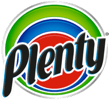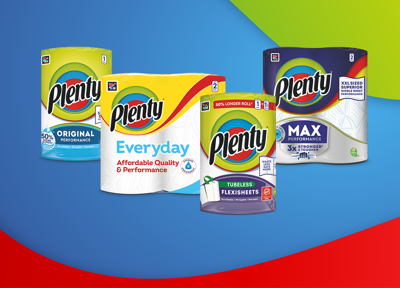
Got questions?
Answers to your most frequently asked questions
Skin health
I’m not sure what "dermatologically tested" means exactly. Are Plenty products friendly to my skin?
There’s actually no official definition for this term Usually, "dermatologically tested" suggests a product has been tested and proven safe for human skin. In reality, each company making this claim defines its own methods for testing. For Plenty it means the products or the product’s raw materials have passed dermal safety studies in human subjects and are safe for close contact with the skin.
I don’t really understand what "hypoallergenic" means.
You’re not alone there. No one really seems to agree on what “hypoallergenic” means. When used to promote cosmetics or hygiene products, it usually suggests that the product causes fewer allergic reactions than you would expect from common products for the same use. But there’s no consensus on how products should be tested, or any standard definition of what the term means.
Is there a chance that Essity products will trigger an allergic reaction?
Because of the nature of allergies, no one can guarantee that a product will never lead to an allergic reaction. All of us react individually and often even differently during the course of one’s life.
Body health
Are there any chemicals in Plenty products that could affect my hormones?
All of us in the product safety team use Plenty products at home and trust them with our own families.
When it comes to chemicals that can interfere with the body’s hormones, we are – again – very strict. We demand transparency from our suppliers about the potential presence of any such chemicals. We screen for traces of selected substances and make sure they are either not detectable or they are so minimal that they are far below any concerning amount.
Per today, science does not know everything about chemicals with effect on hormones. Therefore, we remain diligent and closely follow new evidence and update our product safety processes accordingly.
Do Plenty products contain any chemicals of concern?
We don’t use chemicals in concentrations that could be harmful. Many chemicals of concern are unavoidably present in natural materials in tiny amounts – from parts per million (ppm) to parts per billion (ppb) or parts per trillion (ppt). For comparison: one ppt is like one second in 32.000 years.
For our Product Safety team to give a material the thumbs up, it must first pass our diligent product safety assessment, to ensure that any potential trace chemicals are not present in concentrations that are higher than what is considered safe based on the most updated scientific data.
Materials organic or synthetic
Do you use recycled materials/ ingredients in our products?
Absolutely. Sustainability is an essential priority for each of our brands here at Essity. We’re committed to developing products and services that improve human well-being while also lowering our environmental footprint. Using recycled materials in our products is a great way to do that. For example, we use more than 40% recycled fibers in our global tissue production.
At Essity, we are also continually finding new ways to get “more from less” with thinner or compressed products that function even better while using less material and producing less waste.
Ultimately, it’s our ambition to contribute to a circular society. That means exploring new designs, using renewable and recycled materials and innovating ways to make our products and packaging more reusable and recyclable.
I hear bad things about bleaching. Are Essity products bleached?
No materials in Essity hygiene products are bleached using chlorine gas (elemental chlorine). Elemental chlorine is probably what you’ve heard bad things about.
The bleaching methods we accept (for our cellulose pulp and viscose fibers) are the ECF (elemental chlorine free) method and TCF (totally chlorine free) method, considered by the European Industrial Emissions Directive to be the best available techniques. Both methods have a low environmental impact, as they are based on modern and efficient processes, and use effective wastewater treatment. Additionally, both are also safe with regard to any traces of unwanted chemicals.
I’m concerned about the over-use of plastics. What is Essity doing to reduce the use of plastics?
We’re concerned about that too and consequently, we only use plastics in our products and packaging where it is necessary for the purpose of guaranteeing that the products are not only clean but also safe to use and fulfill the hygienic purpose for which they have been manufactured. Additionally, we’re continually finding ways to use less and less material in our products, including plastics, while also increasing our use of renewable or recycled plastics. One example of this is our optimized use of stretch film, which has allowed us to reduce the usage of plastics at our European tissue sites.
Essity is an active member of the Ellen MacArthur Foundation's plastics initiative “New Plastic Economy.” Our goal is to achieve 100% recyclability for all our packaging, and we’ve already committed to the ambitious target of manufacturing 85% of our packaging from renewable or recycled material by 2025.
Chemicals (traces)
I hear that a lot of commercial products include Bisphenol A. Do Essity tissue products contain this chemical?
It’s a good idea to keep a watchful eye for Bisphenol A (BPA) which appears in many common products and is known to disrupt cellular function.
At Essity we never compromise on the safety of our products, which is why our Global Supplier Standard specifically states that Bisphenol A may not be intentionally added to any of our raw materials. We also don’t use it in our production processes for tissue products.
We do use recovered paper in our raw materials, so we can’t guarantee that our products are completely free of BPA, since it could enter our process in faint traces through these recovered materials. But ongoing studies on our recycled tissue products show these traces are well below any safety and regulatory limits.
I’m trying to be aware of hidden formaldehyde in everyday products. Do Essity products contain Formaldehyde?
Here at Plenty, we never intentionally add dangerous substances to our products, and of course that includes formaldehyde since making our products safe to use is an absolute must for us. Trace levels are sometimes found in the raw materials or the process chemicals we use, but when detected, these are barely over the detection limit, so there’s no need to be concerned.
I’m worried about whether Plenty products contain dioxins. Should I be?
No, you shouldn’t be worried. None of the materials that go into Essity products are bleached with chlorine gas (elemental chlorine) – the method of bleaching that produces dioxins.
Bottom line? The safety of our products is never compromised.
Can I really be sure that Essity products don’t contain any chemicals known to cause cancer?
There are no added chemicals in any Essity products that are harmful to users or that can even cause cancer. It is important to understand that chemicals are all around us in nature and consequently some can be found in trace amounts in our materials and products. But these trace amounts are miniscule and absolutely safe.
Our Global Supplier Standard, which sets the standards our suppliers must comply with, very clearly prohibits the intentional use of known carcinogenic (= being able to cause cancer) and mutagenic chemicals (= being able to cause mutations) in the raw materials that go into our products. We also don’t use them in our production processes.
What you can be 100% sure of is that our products don’t contain carcinogens in amounts that are anywhere near dangerous.
Chemical compositions (intentionally added)
What about other Essity hygiene products (tissue products, cosmetics, detergents, biocides)? Do they contain perfume or perfume components?
Some of our tissue products, like hankies and toilet paper, as well as cosmetics, detergents and biocidal products, may contain perfumes.
We carefully select and assess the perfumes in these products to make sure they’re safe for their intended use. When perfume is present, we either say so clearly on our labelling – with terms like “contains perfume” or “scented" – or we mention it in the ingredient lists.
Do you use any antibacterial substances (preservatives, biocides or similar) in Essity tissue products?
Hankies, toilet paper, facials don’t require preservation, so no, not for that purpose. We do use biocides during the papermaking process, as well as certain preservatives that are required to protect water-based components like process chemicals, glues and ink/dye solutions, softeners, polymer emulsions. But it is important to note that if any biocide/ preservatives traces are in fact transferred to the product, they are so miniscule as to be below detection limit and too low to produce any antibacterial property in the tissue product itself.
Only for a few tissue products, we intentionally add biocidal components, for example for antibacterial properties. You will recognize those products from their labelling.
Do you use optical brighteners in Essity hygiene products?
Traces of optical brighteners might be introduced via recycled fibers used in tissue products. Essity is not intentionally using optical brighteners in its tissue manufacturing process, with very few technical exceptions, where only food contact-approved optical brighteners are used.
Ethics
Do you test on animals?
At Essity we’re all about care – for people, and for the planet. That includes animals.
We don’t support animal testing, and we´re committed to reducing it to the absolute minimum. We never test our products on animals, unless we are absolutely required to by law.
Please see also Essity´s position on animal testing.
Are there any allergenic substances present in Essity´s products?
No substances classified as allergens (with H317 labelling), or generally recognized as allergens, are present in our products, with the exception of perfume, preservatives and very few specific ingredients in low concentrations, which are thoroughly assessed.
For products that do include perfume, like feminine pads and liners, we make sure to say so clearly on our labelling, with terms like “contains perfume” or “scented”. We carefully select and assess the perfumes in these products to make sure they’re safe for their intended use.
Do you use any animal-derived substances in Essity hygiene products?
In principle, no. Our hygiene products don’t contain any substances that directly originate from animals. That would go against the spirit of care that’s at the core of what we do. We also don’t conduct animal testing on our products, except when legally required to do so.
On the other hand, the supply chain for our products is complex, and although we believe the risk is small, we can’t absolutely guarantee that others in our supply chain haven’t come into contact with animal-based materials.
Are Essity products vegan?
In principle our products don’t contain substances that directly originate from animals. However, we can’t really make the claim of “vegan” for our products. This is because the supply chain for our products is complex, and we can’t guarantee that others further up the chain haven’t come into contact with animal-based materials.
I’m concerned about how common genetically modified organisms (GMOs) have become. Does Essity use genetically modified pulp in its products?
We have the same concern, and in principle, the answer is no. We don’t use wood fibers derived from genetically modified trees.
Moreover, the two international forest schemes, FSC (Forest Stewardship Council) and Programme for Endorsement of Forest Certification (PEFC) do not currently permit the use of GMOs in forestry. And Essity actually only uses fresh fibers which are either FSC- or PEFC-certified.
What is Essity’s position on genetically modified organisms (GMOs)?
At Essity we recognize the existing long-term uncertainties regarding environmental and health risks concerning the use of Genetically Modified Organisms (GMOs). That’s why we take a precautionary approach to using materials that derive from GMOs.
If you would like to know more, please see GMO position (essity.com)

